Separable dorsal raphe dopamine projections mimic the facets of a loneliness-like state
- PMID: 40747785
- PMCID: PMC12316461
- DOI: 10.7554/eLife.105955
Separable dorsal raphe dopamine projections mimic the facets of a loneliness-like state
Abstract
Affiliative social connections facilitate well-being and survival in numerous species. Engaging in social interactions requires positive or negative motivational drive, elicited through coordinated activity across neural circuits. However, the identity, interconnectivity, and functional encoding of social information within these circuits remains poorly understood. Here, we focus on downstream projections of dorsal raphe nucleus (DRN) dopamine neurons (DRNDAT) in mice, which we previously implicated in social motivation alongside an aversive affective state. We show that three prominent DRNDAT projections - to the bed nucleus of the stria terminalis (BNST), central amygdala (CeA), and posterior basolateral amygdala (BLP) - play separable roles in behavior, despite substantial collateralization. Photoactivation of the DRNDAT-CeA projection promoted social behavior and photostimulation of the DRNDAT-BNST projection promoted exploratory behavior, while the DRNDAT-BLP projection supported place avoidance, suggesting a negative affective state. Downstream regions showed diverse receptor expression, poising DRNDAT neurons to act through dopamine, neuropeptide, and glutamate transmission. Furthermore, we show ex vivo that the effect of DRNDAT photostimulation on downstream neuron excitability depended on region and baseline cell properties, resulting in excitatory responses in BNST cells and diverse responses in CeA and BLP. Finally, in vivo microendoscopic cellular-resolution recordings in the CeA with DRNDAT photostimulation revealed a correlation between social behavior and neurons excited by social stimuli, suggesting that increased dopamine tone may recruit different CeA neurons to social ensembles. Collectively, these circuit features may facilitate a coordinated, but flexible, response in the presence of social stimuli that can be flexibly guided based on the internal social homeostatic need state of the individual.
Keywords: amygdala; dopamine; dorsal raphe nucleus; loneliness; mouse; neuroscience; social; valence.
© 2025, Lee, Matthews, Lemieux et al.
Conflict of interest statement
CL, GM, ML, EW, MB, RM, LK, GS, CJ, AT, FA, MC, EP, GP, AL, AP, EK, NP, RW, KT No competing interests declared
Figures


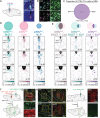
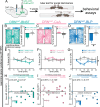


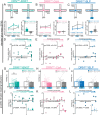




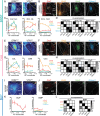

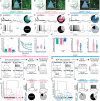







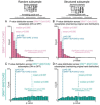

Update of
- doi: 10.1101/2025.02.03.636224
- doi: 10.7554/eLife.105955.1
- doi: 10.7554/eLife.105955.2
Similar articles
-
Dorsal raphe nucleus MC4R-GABAergic neurons regulate feeding and anxiety.Mol Metab. 2025 Sep;99:102199. doi: 10.1016/j.molmet.2025.102199. Epub 2025 Jun 30. Mol Metab. 2025. PMID: 40602716 Free PMC article.
-
Prepronociceptin-Expressing Neurons in the Bed Nucleus of the Stria Terminalis Signal Escape Behavior.Biol Psychiatry Glob Open Sci. 2025 May 22;5(5):100538. doi: 10.1016/j.bpsgos.2025.100538. eCollection 2025 Sep. Biol Psychiatry Glob Open Sci. 2025. PMID: 40678693 Free PMC article.
-
A New Insight into the Role of CART Peptide in Serotonergic Function and Anxiety.J Neurosci. 2025 Feb 5;45(6):e0467242024. doi: 10.1523/JNEUROSCI.0467-24.2024. J Neurosci. 2025. PMID: 39909575 Free PMC article.
-
The Black Book of Psychotropic Dosing and Monitoring.Psychopharmacol Bull. 2024 Jul 8;54(3):8-59. Psychopharmacol Bull. 2024. PMID: 38993656 Free PMC article. Review.
-
Danger and distress: Parabrachial-extended amygdala circuits.Neuropharmacology. 2021 Oct 15;198:108757. doi: 10.1016/j.neuropharm.2021.108757. Epub 2021 Aug 27. Neuropharmacology. 2021. PMID: 34461068 Free PMC article. Review.
Cited by
-
Facilitating analysis of open neurophysiology data on the DANDI Archive using large language model tools.bioRxiv [Preprint]. 2025 Jul 24:2025.07.17.663965. doi: 10.1101/2025.07.17.663965. bioRxiv. 2025. PMID: 40777235 Free PMC article. Preprint.
References
-
- Bailey KR, Crawley JN. In: Methods of Behavior Analysis in Neuroscience. Buccafusco JJ, editor. CRC Press/Taylor & Francis; 2009. Anxiety-related behaviors in mice. - PubMed
MeSH terms
Substances
Grants and funding
- R01 MH115920/MH/NIMH NIH HHS/United States
- R37 MH102441/MH/NIMH NIH HHS/United States
- R37-MH102441 (NIMH)/NH/NIH HHS/United States
- DP2-DK102256 (NIDDK)/NH/NIH HHS/United States
- Summer Scholarship/Johnson and Johnson
- DP2 DK102256/DK/NIDDK NIH HHS/United States
- Postdoctoral Research Fellowship/Charles A. King Trust
- DP1 AT009925/AT/NCCIH NIH HHS/United States
- DP1-AT009925 (NCCIH)/NH/NIH HHS/United States
- R01-MH115920 (NIMH)/NH/NIH HHS/United States
- CCF-1231216/National Science Foundation
- Brains & Cognitive Sciences Department/Massachusetts Institute of Technology
LinkOut - more resources
Full Text Sources

